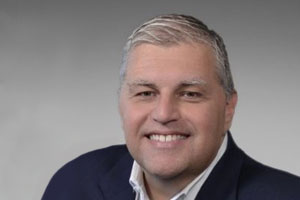
Virtustream had its big coming out at EMC World in Las Vegas this week, present on stage for the first time as a key component of EMC and Dell’s hybrid cloud vision.
Rodney Rogers, CEO of Virtustream spoke to CBR about where exactly the cloud company is targeting the market and the impact of the VMware withdrawal.
Virtustream, which has only been a part of the EMC federation of companies for around 10 months, has already appeared as an integral piece to EMC, and now Dell’s, hybrid vision. Not only that, but in that short period of time, it has also been at the centre of apparent turmoil between EMC and VMware, a subsidiary of which it owns 80%.
The original plan for Virtustream was to be jointly owned by VMware and EMC. Virtustream would take vCloud Air and consolidate it with its own products in addition to taking its own software business over to VMware’s enterprise software offering.
This plan fell through and VMware would be pulled out of the deal after Dell appeared as buyers for EMC.
Rogers said: "Post that acquisition it was just something that we had to re-evaluate across the spectrum and it was just determined to leave things the way they were from this point forward."
In the end, Rogers said that the only thing that was lost was some hours of work: "We had planned an integration and had moved people back and forth, but a bigger deal came about and it just didn’t quite work out anymore."
While VMware’s ownership involvement may have come to an end, it still works with Virtustream and has provided a lot of technology for the fabric of its cloud. Virtustream is using vSphere, vCentre, and ESX, while it is also in the process of integrating NSX into its cloud for network automation.
Rogers said that the relationship between the two is close but that the two aren’t competing: "vCloud air and Virtustream don’t really compete at all in the IaaS space, and on the software side VMware’s vRealise Automation product is the leading private cloud enablement product out there."
Virtustream uses Xtreme software from EMC to power its IaaS platform and Rogers says that it is positioning itself as a market segment that it doesn’t feel is being focused on.
The company is aiming to use an IP that it has developed to run IO intensive, mission critical, state-full applications in a way that gives the user a true cloud experience.
Rogers said: "So you have full agility, full cost advantages, in fact we go beyond sort of the traditional VM based systems to something that is much more granular than that. We sort of melt the cloud down to its molecular components if you will."
This molecular focus works by going in to a company and addressing the traditional environments. Rogers described an example of running an SAP application to support the order to cash cycle of a $10bn business.
"We will go in and bring a modern multi-tenant cloud architecture to that, the agility, the cost efficiencies – but not sacrifice performance. That granular IO control IP allows us to assure latency for the apps that run in the cloud. That’s kind of how we’ve approached it," said Rogers.
The idea for the venture capital backed company to focus on this area was born out of a desire to not be a sub-scale Amazon Web Services. Rogers said that while his company has attempted to take the automation and the architectural philosophy of AWS and apply it to running heavyweight IO intensive work, it is in a different market focus to the public cloud leader.
"It’s just a different issue, it’s compute scale vs memory intensity and we really solved for the latter and no one was really doing that," he said.
Rogers is clearly confident of what Virtustream is doing and the company is gaining traction in areas such as the packaged goods industry, retail, healthcare, and in federal.
Part of this he attributes to IP that the company has developed to allow it to tag data and give it authority to reside in a certain location, something that would be beneficial to European users.
Rogers, in the end, attributes the company’s early success on an "almost masochistic" approach to building IP and "prosecuting that particular market segment."
Virtustream is new to the EMC federation but it has kept its brand, as it will under Dell if the acquisition goes ahead, and while there is still some integration work to be done, it is already working on projects with its latest new owner.
Rogers is unsurprisingly quite happy with how things are going, having recently been acquired by a $25bn company, it is now becoming part of a combined company that is worth over $100bn, and to make it sweeter, Virtustream has already become the key to Dell-EMC’s hybrid cloud end-to-end vision.






